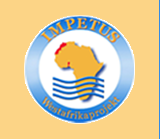| |
Future prospects
|
|
Temperature correction
The present study shows that major changes in the malaria spread in East Africa
(see page "2001-2050") are expected in future.
Particularly the East African Highlands are affected by a changed warmer climate.
However, at temperatures around the sporogonic temperature
threshold the LMM simulation is quite sensitive to the temperature input. For this reason
the temperatures have to be as realistic as possible. The temperature data input of LMM
will be checked in the next step and will be corrected when necessary.
LMM validation
LMM simulations have so far only compared with malaria distribution maps from the
mapping MAlaria Risk in Africa (MARA) project (see page "1960-2000").
A more detailed validation of LMM will be based on entomological and parasitological data from
West African field studies. Due to the LMM construction the model results will be only compared to
rural field measurements. The data taken from the literature will finally be compared with LMM simulations
forced by observations from 34 African weather stations.
The model output will be evaluated with regard to annual Entomological Inoculation Rates
(EIRa)), annual Human Biting Rates (HBRa),
average CircumSporozoite Protein Rates (CSPR) of mosquitoes and parasite ratios (PR).
Moreover the simulated period of the malaria transmission will be compared with the
observed malaria season.
Malaria and meteorological observations in West Africa and Cameroon
Original and proposed LMM settings
Validation of a proposed LMM setting
Final LMM parameter setting
By means of the validation shortcomings of the LMM might be detected. In such a case the
parameter setting of the model will be changed. Finally an "ideal" LMM setting will be
again forced by corrected temperature and precipitation data. Such more resilient
LMM simulations will increase the confidence of the assessment of malaria risk in Africa.
MSM results
Corrected REMO temperatures will change the simulations and projections of the MSM.
For this reason, new MSM runs will be performed by means of new climate conditions that are
based on corrected REMO temperature and already adjusted REMO precipitation data.
|
|
